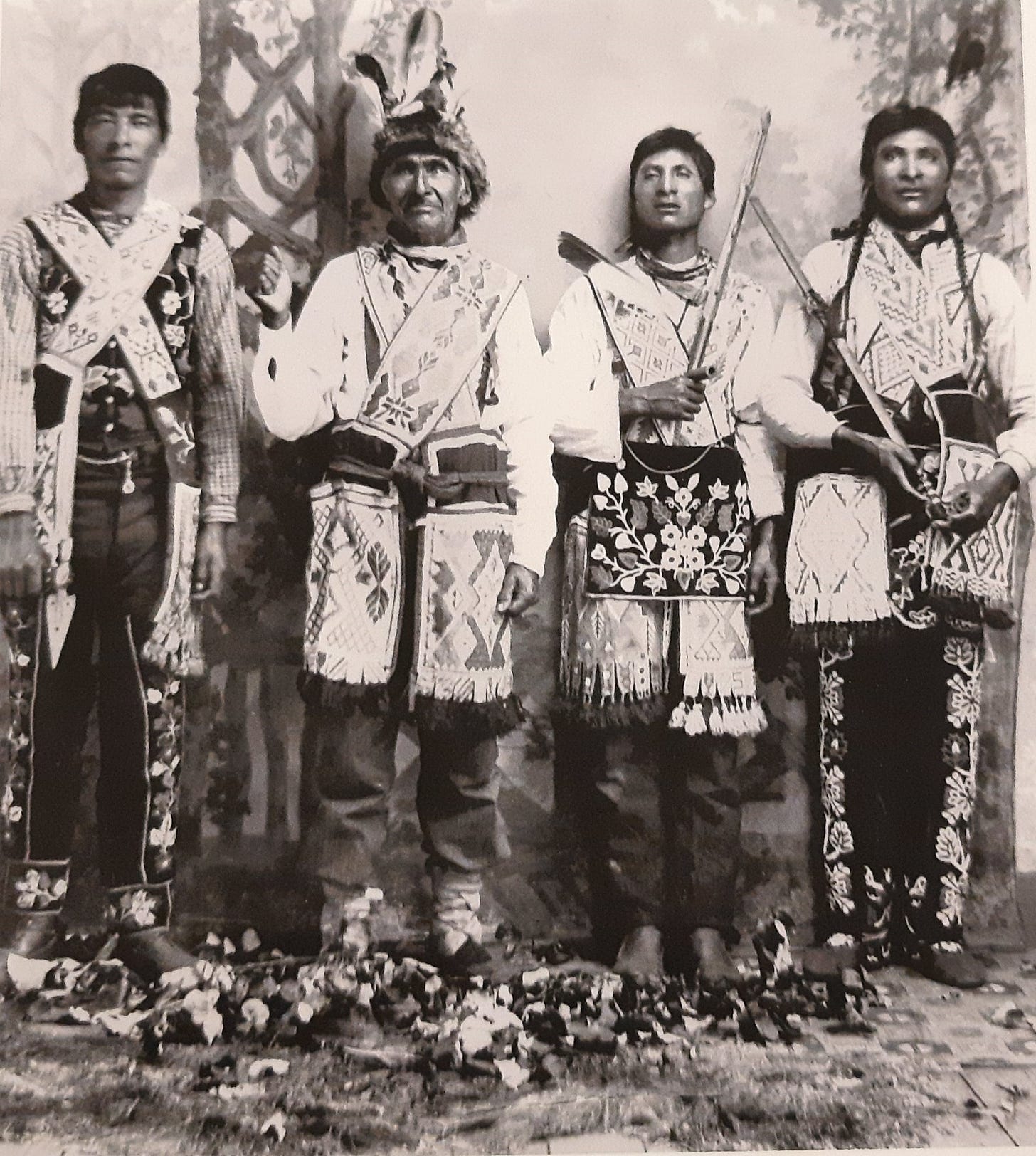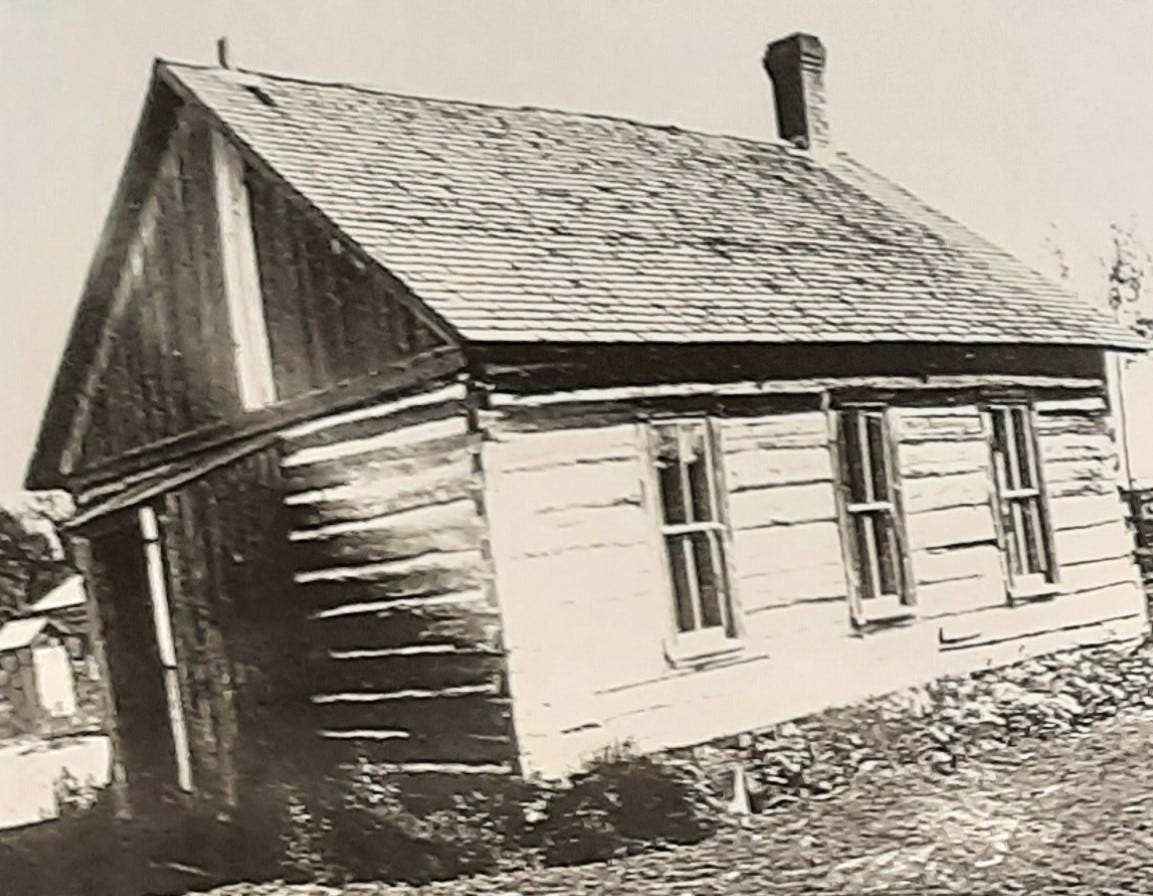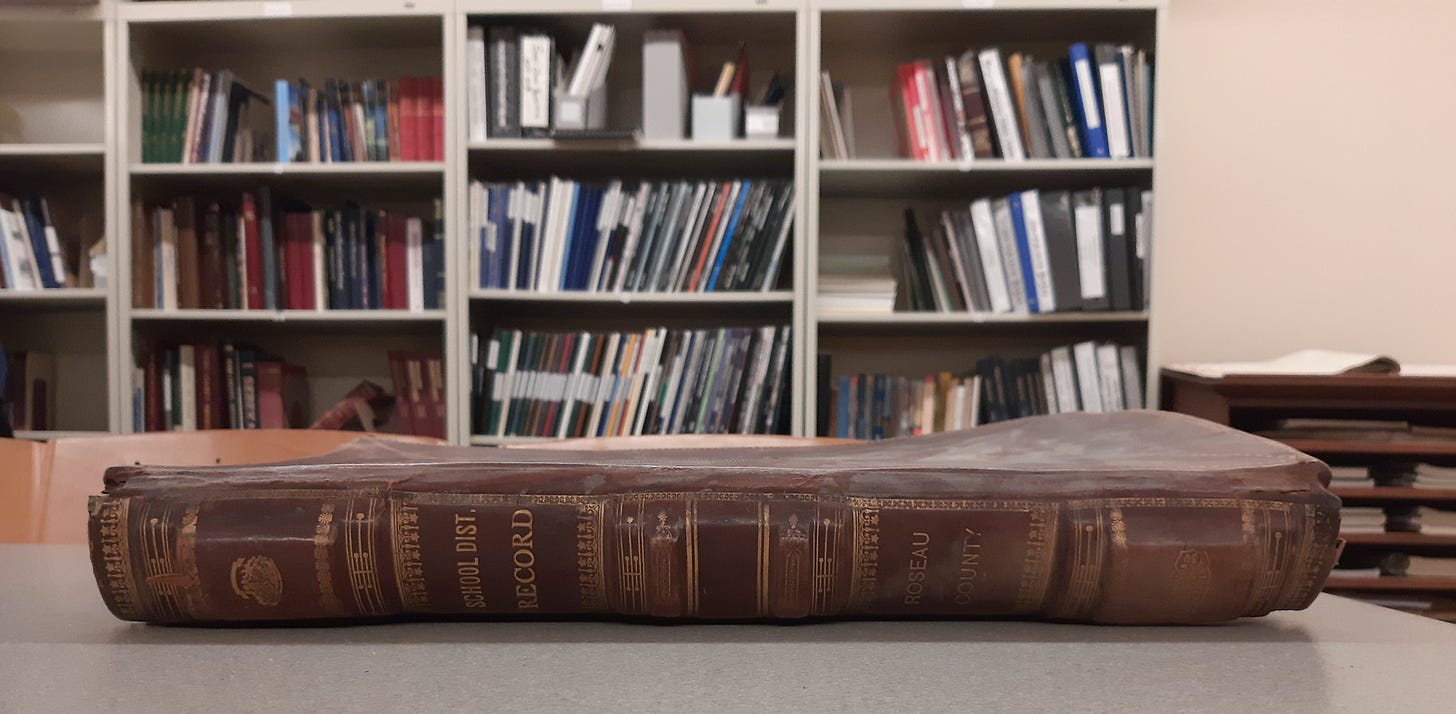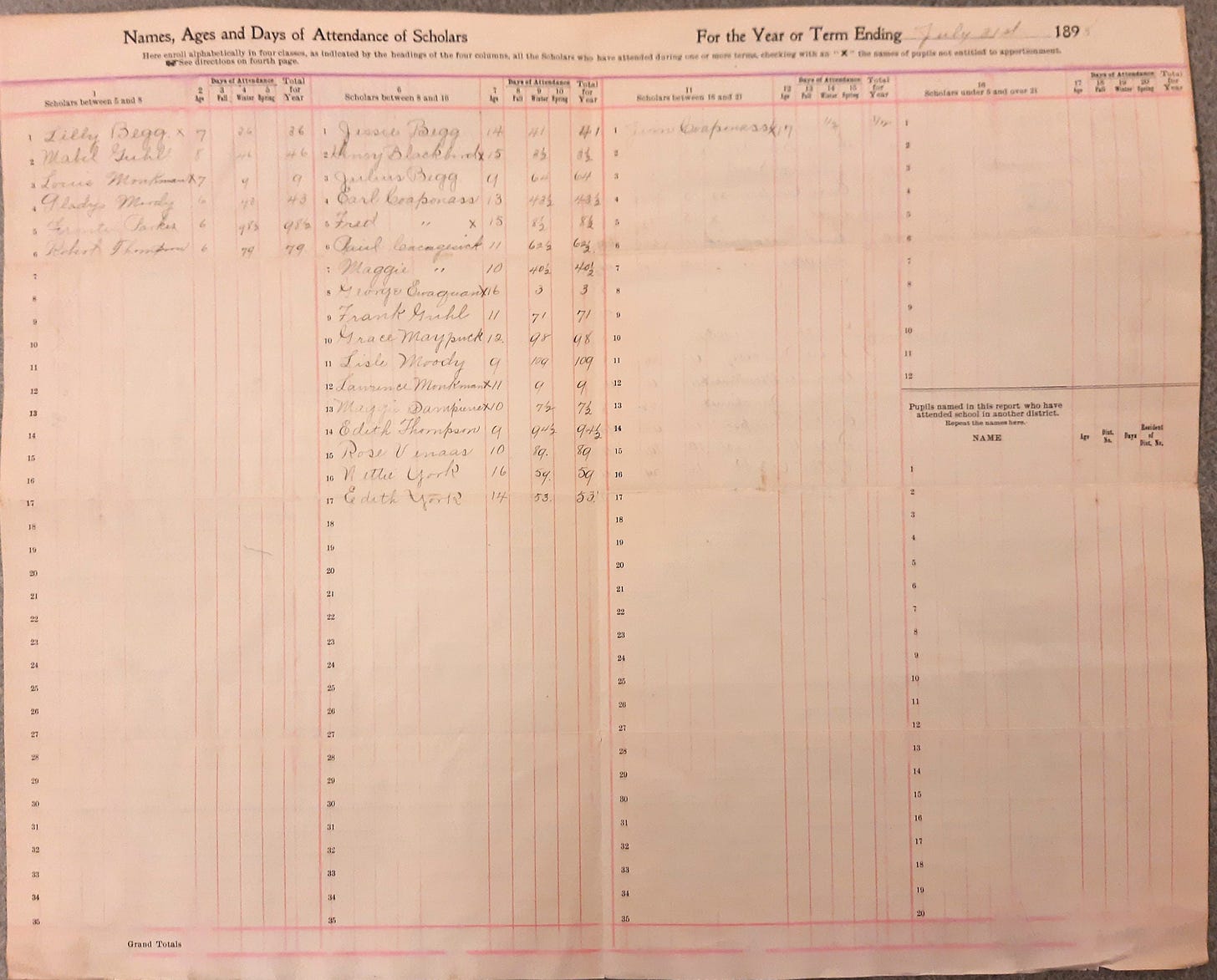During my recent trip to Lake of the Woods, I went digging in the archives at the Roseau County Museum hoping to find school records from before 1904, the year the City of Warroad established an independent school district.
When I had looked through the district records held in St. Paul at the Minnesota History Center, I had not found any names of Indian children in attendance from 1904 until 1925. This contradicted the version of history in which the city and school district take enormous pride.
Could I corroborate the account in Warroad and Area 1897-1905 written by local historian Alvin (Ole) Swanson and published in 1983? He had written that a Miss Gilbertson was to have said in 1898 she “had many Indian children who could not speak or write English at the start of the term who were now doing work on a second grade level.” I had not found any Warroad school records earlier than 1904.
Stored in a box of file folders full of student attendance records in Roseau County from 1894-1909, I located the Teacher Term Reports for Warroad School.
Miss Rena Gilbertson taught the first year of 1897-98. She was paid $35. There were a total of 24 students enrolled.
Six student names in the first column were between the ages of 5 and 8 years old: Lilly Begg, Mabel Guhl, Louis Monkman, Gladys Moody, Frontie Parker, and Robert Thompson.
The Begg family name may be familiar to readers as Scottish-Métis. Lilly’s grandfather, Duncan Begg, translated at the sale of Naymaypoke’s land to the school district seven years later in 1905. Lilly’s mother, Mary Ann Muggaberg, was the daughter of a Norwegian father and Ojibway mother. The Monkman family, I learned in newspaper clippings in the family folder at the Warroad Heritage Center, is also Métis.
The second column for ages 8-16 lists fourteen students.
Jessie Begg
Henry Blackbird
Julius Begg
Earl Copanass
Fred Copanass
Paul Cacagesick
Maggie Cacagesick
George Ervaquant
Frank Guhl
Grace Maypuck
Lisle Moody
Lawrence Monkman
Maggie Dampierre
Edith Thompson
Rose Venaas
Nettie York
Edith York
When I look over the roster of names, I realize Indian and Métis children made up half the student body in the first school year (1897-1898). Seven students are related to Naymaypoke.
Henry Blackbird is the son of one of three daughters of Chief Ay Ash Wash. Naymaypoke would have been Henry’s uncle.
The listing of Paul Cacagesick, age 11, and Maggie Cacagesick, age 10, confused me until I realized Cacagesick is a variant spelling of Kakaygeesick and that they are his grandchildren.
Grace “Maypuck” is Naymaypoke’s youngest daughter.
Earl and Fred Copanass are brothers in a family whose surname has been spelled various ways in English. Copenance. Cobenais. Cobiness.
Jim Copanass is the one student between the ages of 16 and 21 listed in the third column of the attendance record. He attended school for half of one day.
Jim Copanass appears on the far right in this photograph I found in the files of the Roseau County Historical Society.

In that first year of school there were 24 students according to Miss Gilbertson; half were children of white settlers.
In the second year, 36 students were enrolled. All but Grace Namaypoke, three of Kakaygeesick’s grandchildren, and Daisy Muggaberg were children of white settlers.
The only Indian or Métis student on the attendance roster in 1900 is Grace Naymaypoke. After that, there were no more Indian students who appeared to be enrolled in Warroad Schools until 1925.
While I found the answer to one question — Indian students did attend the school on Naymaypoke’s land before he relinquished the property to the school district — it begs a new question. Why did they stop attending even before Naymaypoke sold the land?







Mabel Guhl was my great-grandmother. She married Albert Johnston in 1906 and my grandfather, Dorrance, was born in 1907. https://www.findagrave.com/memorial/178098966/mable_g_johnston
So much to discover in original research. And then interpret and question.